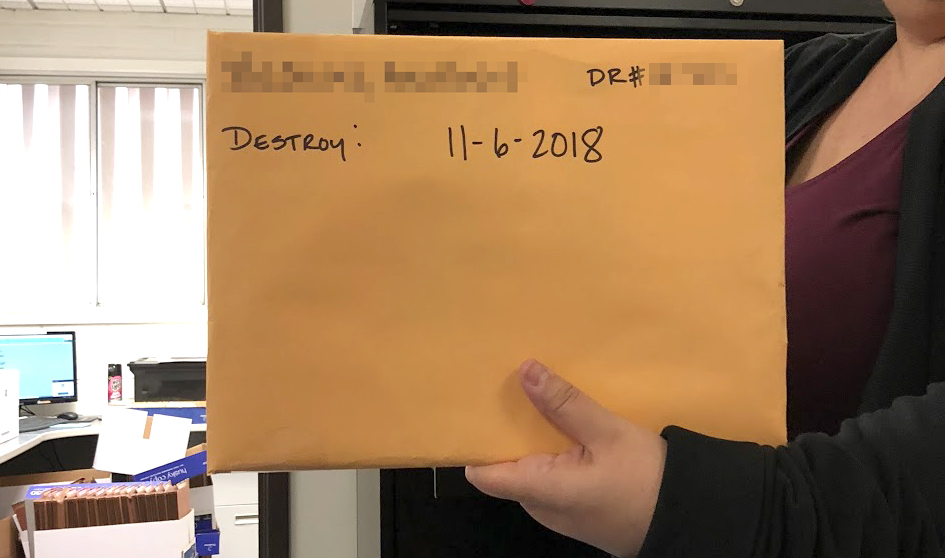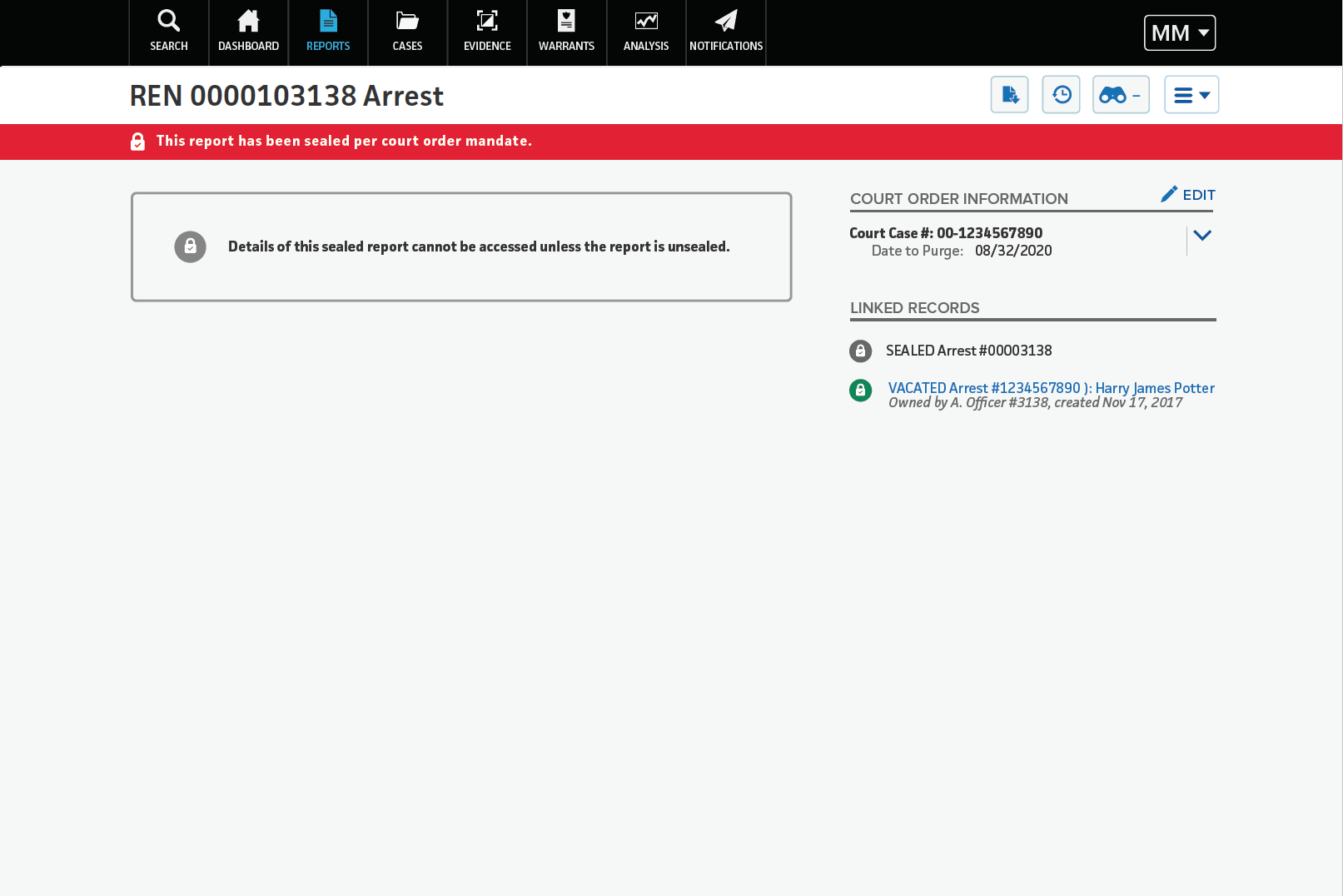Records Privacy: Designing for our Users and their Communities
Liz Harman | 23 January 2020 | 7 minute read

Every new feature or product at Mark43 starts with getting to know our users through research, uncovering problems or pain points in their day-to-day tasks. Designers at Mark43 are not law enforcement personnel, so we place great value on in-person research with our clients. As a product designer at Mark43, I worked closely with my team’s product manager to understand how we could modernize an outdated, paper-based process for handling post-conviction relief, a procedure whereby a convicted criminal can request that a conviction or sentence be corrected or their records be modified. This process impacts both the direct users of our software, as well as the community at large.
Community Impact
The handling of sensitive records by law enforcement agencies (LEAs) is critical, as they can have lasting impacts on members of the community that have gone through the court system. This is especially important for young people who may experience lifelong effects of their juvenile delinquent acts if records are not handled properly. For example, a juvenile arrest may appear on someone’s background check when applying for a job. In many cases, employers are not able to discern the difference between a juvenile arrest record and an adult arrest record. The negative stigma attached to a young person with a criminal record may cost them opportunities for employment, education, and more.
The Juvenile Law Center, a non-profit organization that advocates for youths in child welfare and justice systems, released the first-ever Nationwide Scorecard on Juvenile Records in 2014. In the report, states were assessed and ranked on how they handled confidentiality and expungement of these sensitive juvenile records. In an article about the report, Associate Director of Juvenile Law Center, Lourdes Rosado, said:
“The juvenile justice system is intended to rehabilitate youth and prepare them for a productive future, yet our mishandling of juvenile records creates a paper trail that can lead to failure…”
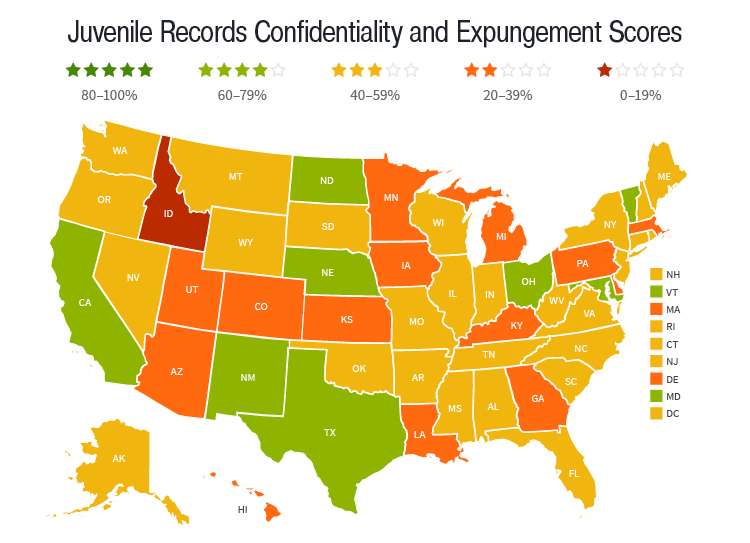
‘Nationwide Scorecard on Juvenile Records’ released by the Juvenile Law Center in 2014
According to the report, no state received a perfect score and over 80% of states received 3 or fewer stars, meaning that they only met 40–59% of the best practices for handling these records. These ill-handled records may leave marks on a juvenile’s records that follow them throughout their entire life (Read more about the study and dig into each state’s score).
A core mission at Mark43 is to improve safety for all, including people in the communities that our LEAs serve. The product team at Mark43 took on the exciting challenge of building out a new feature to better support post-conviction relief actions within the Mark43 Records Management System (RMS) and streamline existing workflows that have a direct impact on people in the community.
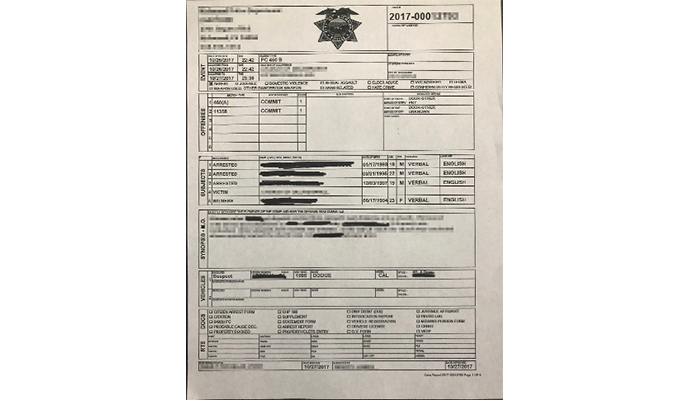
Printout of a redacted juvenile arrest report.
Post-conviction relief can take the form of many different actions performed on a person’s criminal record. An arrestee can request that their criminal charges be vacated from their arrest report, flagging that they were found not guilty of the charges. Individuals can file to have all records of their involvement in a crime expunged, meaning that their involvement in a particular case is permanently erased, and is not available for anyone to see. This piece focuses on one particular post-conviction relief action: sealing. This means that a person’s involvement in a case is removed for a period of time until it is eligible to be expunged. When a person’s involvement has been sealed, it is not available to the public or third parties (with very few exceptions) unless it has been unsealed per a new court order.
The Unsung Heroes of Policing
When thinking about policing, most people think of patrol officers. However, in any LEA, there are many groups that work behind the scenes to keep departments on track and operational. One such group is a police department’s records staff, often referred to as records admins. This group is critical in keeping police records up to date and accurate, and is responsible for the privacy or dissemination of records for public requests and other third parties such as insurance companies or courts. Many of the tasks they work on are multi-step and often very manual.
There are far fewer records admins in a police department than active-duty police officers. Because of this, features that improve their workflows are put off or not addressed at all by traditional RMS providers.
Uncovering the Biggest Issues
Creating a feature for acting on post-conviction relief processes began with learning how records admins currently act on court orders. We studied the laws and terminology used by state legislation and LEAs, and then proceeded to interview and shadow users from different police departments across the United States. Our findings revealed that these sealing processes are almost entirely paper-based. Users print out copies of the electronic reports, delete those reports from the RMS, fine-tooth comb through these documents with a sharpie to remove any reference to the person obtaining this post-conviction relief, and re-upload the redacted report into their system. Because of this, records departments keep a growing mass of physical records stored on site.
A typical ‘sealed report’ in an old workflow, which shows the involved person’s name, court order number, and purge date on an envelope with the full report inside.
Through research, some problems became immediately clear:
- There is no easy way to find all references to a person within an individual report. Records admins are forced to read through any number of lengthy report narratives, forms, attached documents, and photos to find and remove all sensitive information related to a person’s involvement in a report when sealing.
- There is lost investigative value when sealing a report. Legacy RMS providers don’t allow for the granularity that is necessary to seal a person. As a result, entire reports are sealed that may contain useful information that would help detectives apprehend others who may have been involved in the report.
- Current processes are time-consuming and mistake-prone. Acting on each court order that comes into a police department can take several hours, and leaves room for human error.
To the Drawing Board
While we want to make sure our users have the tools necessary to keep records private and secure, we had to balance the needs of this group of users with the technical limitations of our product and engineering resources. We aimed to create a powerful and simple feature that records admins could use to take action on court orders, in a way that would make them feel confident that they were doing their job accurately, efficiently, and completely.
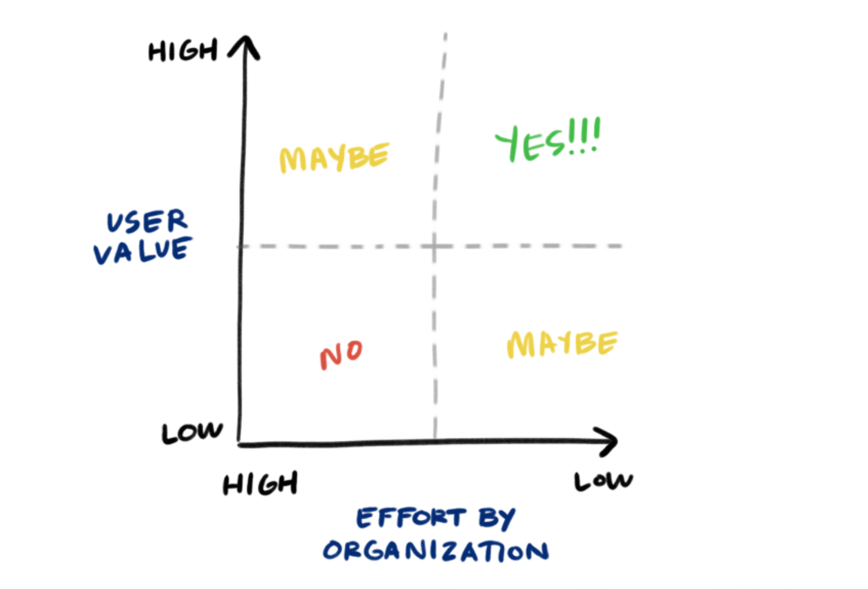
A Prioritization matrix indicating value to the user and effort by an organization. https://www.nngroup.com/articles/prioritization-matrices/
The most challenging part of this feature, aside from learning legal terms and requirements, was determining how far we were able to push designs and change existing workflows. Initial concepts looked to completely reimagine the process. Some of the big ideas generated included new workspaces for records admins, DocuSign-esque walkthroughs, or step-by-step wizards to act on each record within a case. However, after receiving feedback from users and collaborating with our engineering team, we determined that such large projects were a high level of effort to build and the additional capabilities were not crucial to the primary workflows, delivering less value to users.
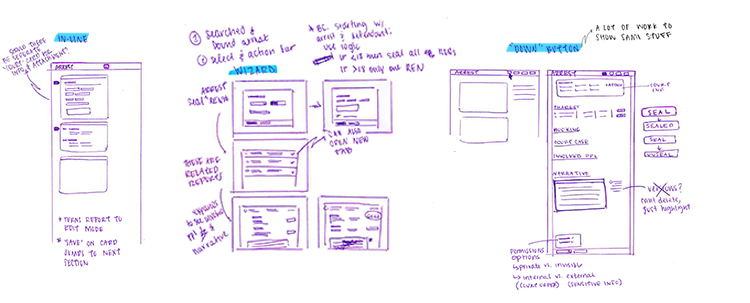
Early wireframes for acting on court orders within a report.
We took a step back and focused on delivering the most value with a more reasonable level of engineering effort. A lot of inspiration for the design of this feature came from the way records are currently kept. We wanted to make sure that the process was transparent and addressed the primary pain points we had identified. By doing this, we could also reduce the learning curve of this new feature and give our users more confidence in their actions. Ultimately, we created a completely paperless process that allowed records admins to act on court orders at a more granular level. Records admins can now quickly search for a person in the Mark43 RMS system and find all related records, act on reports at a per-person level, and remove the need for manual, paper-based court order workflows. This allowed our users to maximize the information they maintained, keeping their data cleaner, while simultaneously offering an improved degree of compliance with court orders and public records laws.
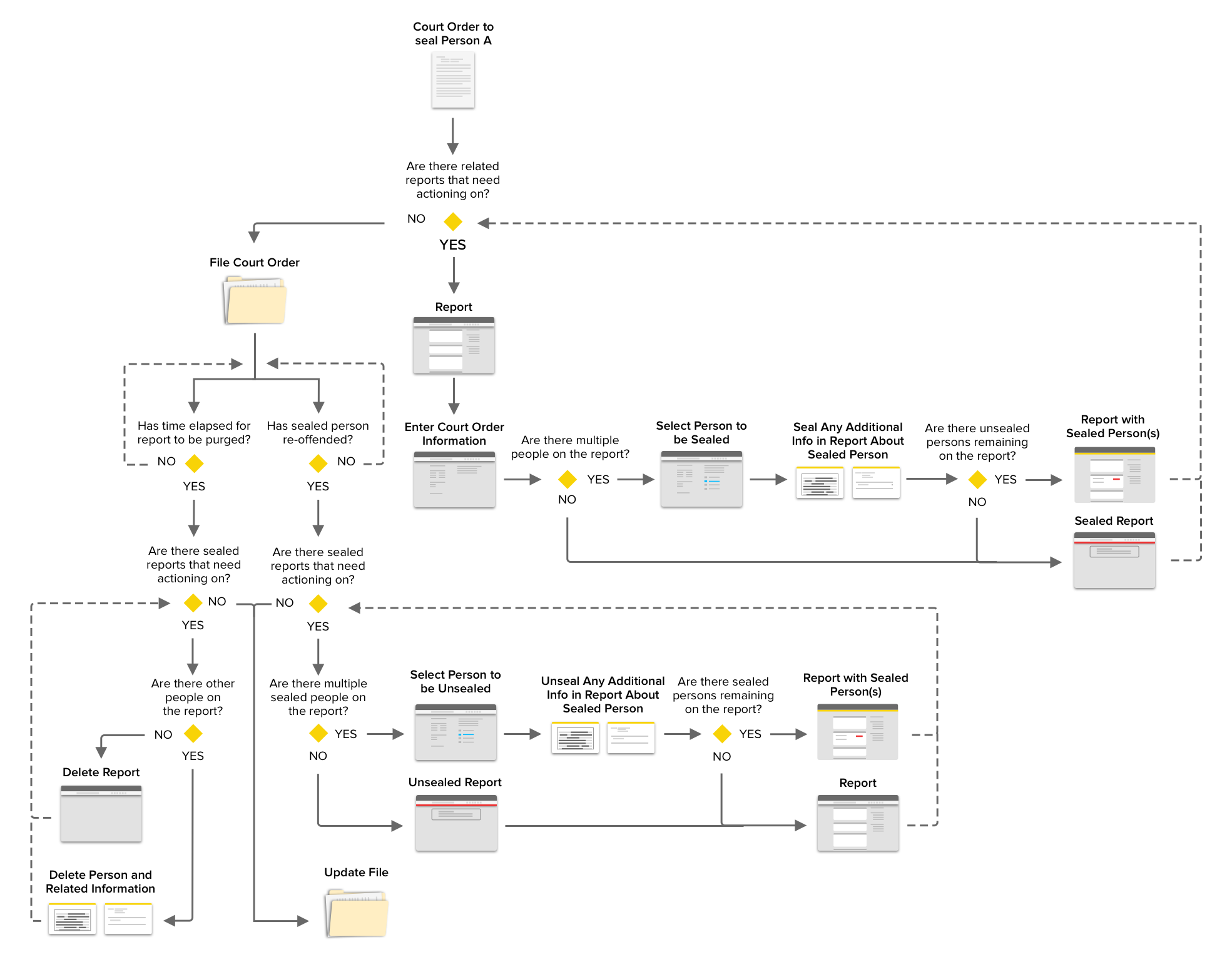
High-level workflow for sealing, unsealing, and purging a court order.
Although the thinking behind this project was intensive and complex, the end result for our user is simple and makes use of existing patterns and familiar processes. Because we identified and understood our user’s pain points, users were excited to use the new feature for acting on court orders, such as sealing. When it was released, it was readily adopted by clients and records admins found the process intuitive: records were easier to act on and track, they could perform actions at a more granular level to improve data integrity, and they were able to reduce the amount of time they spent fulfilling court orders.
By creating a powerful and simple feature for acting on court orders, we empowered records admins to operate more efficiently and serve their communities with better handling of these private and sensitive records.
A sealed report in the Mark43 RMS showing report number, court number & other related details, purge date, and related records. Once sealed, the report cannot be accessed unless it is unsealed per a new court order.


